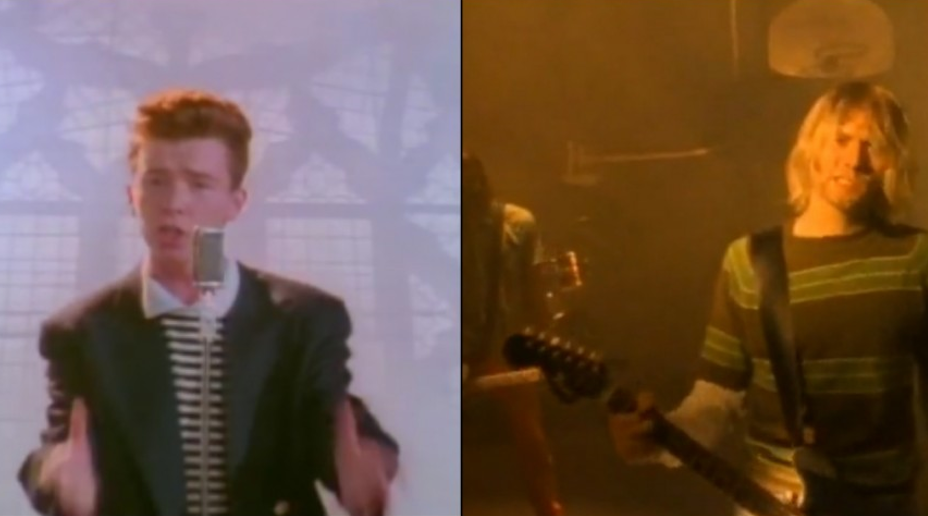 Science writer Matthew Ridley has described the innovation process as one of trial and error in which individuals combine pre-existing techniques and/or technologies.
Science writer Matthew Ridley has described the innovation process as one of trial and error in which individuals combine pre-existing techniques and/or technologies.
One example: Horizontal drilling and hydraulic fracturing were around for many years before innovators figured out how to put them together to revolutionize the energy market.
Another example: Rick Astley’s “Never Gonna Give You Up” and Nirvana’s “Smells Like Teen Spirit” were around for decades before some unknown innovator combined them to create the greatest song in the English language.
Likewise, a new policy brief posted to the Arizona Charter Schools Association website suggests that combining project-based micro-schools with rigorous live distance learning can create a new path, to scale, for high-demand schools and can unleash new opportunities for teachers while addressing equity concerns with pandemic pods.
A Phoenix radio host interviewed a 44-year (!) classroom veteran teacher last year. The teacher observed that the main problem with education today isn’t a lack of funding, which he said has “always been tough.” The real problem, he said, is that “the joy of teaching has been strangled out of the profession.”
This can and must change, and combining small education communities with rigorous distance learning just might do the trick.
If you’ve ever visited a project-based learning micro-school, you quickly see the joy so sorely lacking in most education settings. With Sal Khan, founder of a free educational video library that allows blending learning, as your scout-troop/school leader, you’re watching an excited group of kids engaging in 3-D print design. An education guide leads students through some daily academic work on computers, but then the students tackle group projects.
I watched students engaged in 3-D print design at a Prenda micro-school on the Apache Nation in San Carlos Arizona. These kids were not just learning, they were learning and loving it. These types of schools have great potential because they do not require educators to raise funds for multi-million facilities.
This style of education, which took an early hold prior to the pandemic, has been thrust into the limelight now through the advent of pandemic pods. Educators can address equity concerns, such as a low-income family’s ability to pay teachers and gain access to computers, with enlightened public policy.
Success Academy of New York developed another innovation to pair with micro-schools. Success Academy changed the roles of instructional staff for distance learning, with teachers variously tackling the roles of lecturers and small group facilitator/student problem solvers.
The most skilled math instructor in the network gave a live internet broadcast lecture via the internet. Students divided into small groups to interact with teachers to discuss the material and work out issues. Teachers then graded and monitored student achievement and scheduled individual online tutoring sessions with struggling students.
The Success Academy distance learning model is itself potentially revolutionary. In theory, the network could offer this version of itself to both enrollment lottery winners and enrollment lottery losers. Many parents on the waitlist might very much prefer this option over a spot in a district that numbers rather than names schools.
Education, however, is very much a social enterprise for many, as most of us want and need access to instructors and classmates. We need community. The Arizona Center for Student Opportunity brief referenced above calls for educators to combine Prenda-style micro-schools with Success Academy-style distance learning programs.
This proposal could take a variety of forms. Education service providers could reach agreements with pandemic pod providers to “adopt” them into their distance learning programs. Alternatively, high-demand schools could gauge interest in creating pods among their current students and their waitlisted families.
Equity-related concerns connected to pandemic pods could be addressed through funding students. Private choice programs focusing on disadvantaged student populations, such as Florida’s scholarship programs, could be used to help low-income students and those with disabilities afford micro-schools. Alternatively, public school distance-learning statues could defer costs.
In Arizona, Prenda operates schools through district, charter and private choice mechanisms. All Prenda students take the state’s AZMerit exam, and students whose education is funded through district and charter mechanisms have their results factored into school ratings.
In partnering with a Success Academy-style distance learning provider, the “mothership” would provide the live lecture, while the small group facilitation function would be conducted by in-person by guides. Different flavors of micro-schools can be created through affiliation with different mothership institutions. Teachers can run the show rather than being part of all-too-often hugely indifferent bureaucracies. All we need are some trailblazing educators and enlightened policy.
To paraphrase the Gen-X bard:
“With the schools out, it’s less dangerous! Here we are now, liberate us! Don’t feel stupid or contagious! Here we are now, educate us!”


